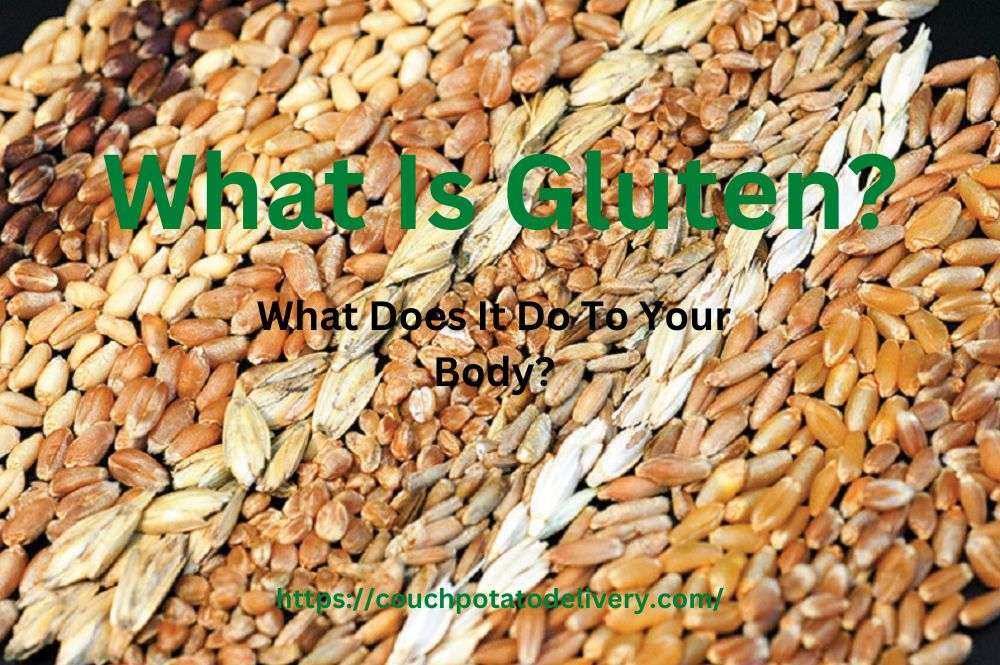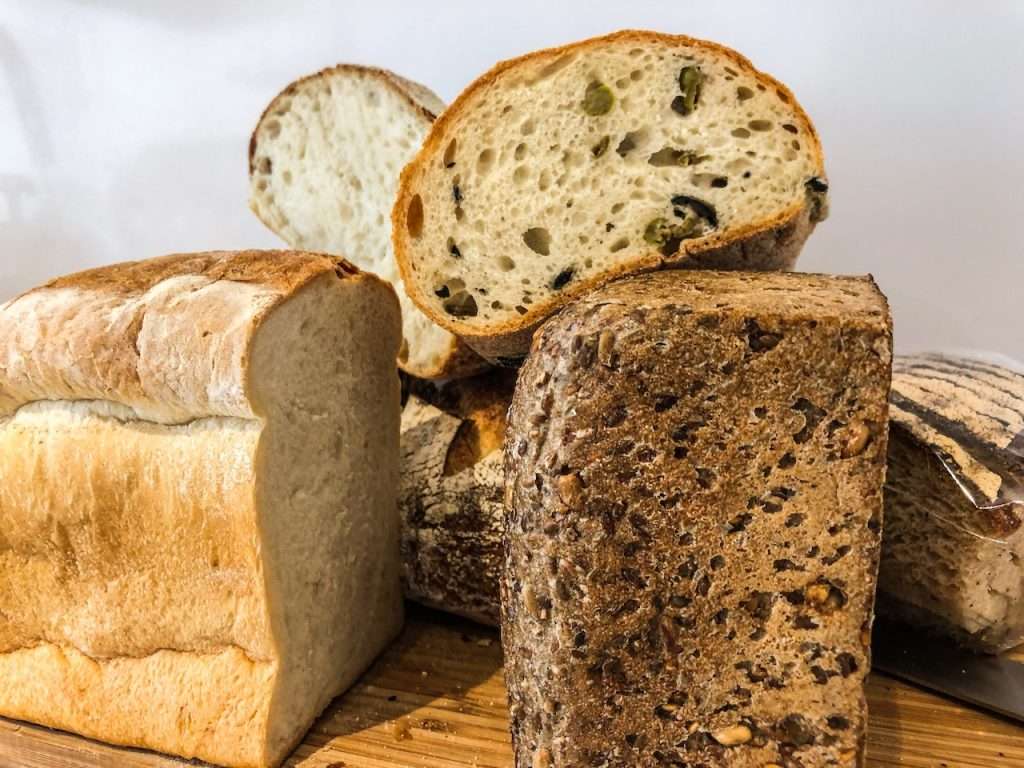
Gluten is an essential protein in wheat, barley, rye, and other grains. It’s also used as a thickener or binder in many foods.
There are several arguments for and against gluten. While some arguments say gluten is beneficial to the body, others say it is not.
But what do people mean when they say “gluten-free”? Are there any benefits to eating gluten? Or are people who claim they have gluten sensitivities just making up excuses?
“Read on to learn more about gluten and its effects on our bodies.”
Table of Contents
What is Gluten?
Gluten is a class of proteins in wheat, barley, rye, and other grains. It thickens soups, sauces, gravies, and baked goods such as bread, pasta, pizza, and cereal. It’s also used as an additive in many processed foods.
If you are in a hurry you can have a look at what I think are the options for the best gluten-free meal delivery services.
Gluten occurs naturally but can also be extracted, concentrated, and added to food and other products to add protein, texture, and flavor. It also behaves as a binding agent to keep processed foods together and shape them.

What Foods Have Gluten?
Wheat
The following wheat product contains gluten:
- Semolina
- Farina
- Emmer
- Einkorn
- Wheatberries
- Spelt Wheat
- Graham
- Farro
- Durum
As we know, wheat can be used in baked goods, including bread, soups, pasta, cereals, sauces, salad dressings, and roux.
Rye
The following contains rye and gluten
- Rye bread, such as pumpernickel
- Rye beer
- Cereals
Barley
The following contains barley, which means they contain gluten
- Malt
- Soups with food coloring
- Beer
- Yeast for Brewing

Malt products like malted barley flour, malted milk, malt extract, malt syrup, malt flavoring, and malt vinegar all contain gluten.
Oats:
- Oatmeal
· Triticale:
Triticale is a newer grain grown to have a similar quality to wheat while being tolerant to a wide range of growing environments, similar to rye. It is used in foods like:
- Bread
- Pasta
- Cereals.
Health Benefits of Gluten
Gluten is most frequently associated with wheat and wheat-containing foods, both of which are abundant in our diet.
Wheat and gluten have received so much pushback, leading some people to question the place of gluten in a healthy diet.
However, there is little published research to back up these assertions; published study suggests the opposite.
In a 2017 research of over 100,000 people who did not have celiac disease, researchers discovered no link between long-term dietary gluten consumption and heart disease risk.
As such, the findings suggested that non-celiac individuals who avoid gluten may increase their risk of heart disease due to a potential reduction in whole grain consumption.
Many studies have found that eating whole grains improves your health.
For example, people with the highest intakes of whole grains, including wheat (2-3 servings daily), had considerably lower rates of heart disease and stroke, type 2 diabetes development, and deaths from all causes than people with the most inadequate intakes (less than two servings daily).

Gluten may also act as a prebiotic, which means it feeds the “good” bacteria in our bodies.
These bacteria are common in a healthy human gut. Changes in their quantity or activity have been linked to gastrointestinal diseases such as irritable bowel syndrome, inflammatory bowel disease, and colorectal cancer.
When Gluten Is a Problem
What’s not so great about gluten is that it can cause serious side effects in some people. Some people have a severe reaction to gluten.
In some people, their body perceives it as a toxin, causing immune cells to overreact and attack it.
If a gluten-sensitive person continues to eat gluten, it creates a battleground that results in inflammation.
The Gluten side effects can include any of the following:
- Mild fatigue
- Minor bloating
- Alternating constipation and diarrhea
- Severe unintentional weight loss
- Malnutrition
- Intestinal damage
All these symptoms or side effects are the same as in the Autoimmune Disorder of Celiac Disease.
The most severe form of gluten intolerance is Celiac disease, also spelled Coeliac disease. It affects approximately 1% of the population, that is, 1 in 133 Americans.
It is an autoimmune disorder in which the body perceives gluten as an invading force. The immune system fights both the gluten and the gut lining.
This causes nutrient deficiencies, anemia, severe digestive issues, and an increased risk of many diseases by damaging the gut wall.
However, some people with celiac disease do not experience digestive symptoms but do experience other symptoms, such as anemia or tiredness.
As a result, identifying celiac disease can be difficult for doctors. In fact, according to one study, 80% of celiac disease patients were unaware of their condition.
According to research, people with celiac disease are also at a slightly higher risk of osteoporosis, infertility, anemia, nerve disorders, and, in rare cases, cancer.
Signs of Gluten Intolerance
Gluten intolerance is also referred to as Non-celiac gluten sensitivity. It can be defined as a gastrointestinal irritation caused by gluten in people who don’t have celiac disease.
Their celiac disease tests are negative (which is normal). Still, they experience the following symptoms whenever they consume gluten-containing foods:
- Diarrhea or constipation.
- Abdominal pain.
- Headache.
- Anemia.
- Nausea and vomiting.
- Brain fog or trouble concentrating.
- Fatigue.
- Anxiety.
- Joint pain.
- Depression.
- Skin rash.
- Bloating or gas.
Gluten intolerance can affect anyone, but it is more common in women. Gluten intolerance is inherited in some people, while it develops later in life in others.
According to research, approximately 6% of the US population is gluten intolerant. It is more common than celiac disease, which affects around 1% of the population.
Other instances where gluten is a problem include:
Wheat allergy:
This is an allergy to one or more of the proteins found in wheat (albumin, gluten, gliadin, globulin), identified by positive immunoglobulin E blood tests and a food challenge. In comparison, celiac disease is single gluten intolerance.
Possible symptoms of wheat allergy include:
- Anaphylaxis
- Puffiness or itching of the mouth or throat
- Stomach Cramps
- Hives
- Shortness of breath
- Diarrhea
- Nausea
- Itchy eyes
People who do not have wheat allergies may still be sensitive to gluten. This condition is most commonly seen in children and is usually outgrown by adulthood.
Dermatitis herpetiformis (DH):
This is a skin rash caused by gluten consumption. It is an autoimmune response that manifests as a persistent red, itchy skin rash with blisters and bumps. Although people with celiac disease may also have DH, this is not always the case.
The good news is that eliminating gluten from one’s diet may help to reverse the damage. A gluten-free diet is the chief medical treatment for celiac disease and other instances where gluten is a problem.
On the other hand, understanding and adhering to a strict gluten-free diet can be difficult. You will probably need the assistance of a registered dietitian to learn which foods contain gluten and ensure that adequate nutrients are obtained from gluten-free alternatives.
What Is a “Gluten-Free Diet”?
A gluten-free diet is one that doesn’t include foods that contain or are contaminated with gluten. However, because ‘gluten-having’ whole grains contain fiber and nutrients such as B vitamins, magnesium, and iron, it is essential to supplement these nutrients.
Here is a gluten-free food list:
Along with naturally gluten-free foods like fruits, vegetables, legumes, nuts, seeds, fish, eggs, and poultry, the following whole grains are naturally gluten-free:
- Buckwheat
- Gluten-free oats
- Quinoa
- Sorghum
- Amaranth
- Corn
- Teff
- Millet
- Brown, black, or red rice
The following proteins are naturally gluten-free:
- Red meat (e.g., pork, lamb, bison, and fresh beef)
- Fresh Chicken & Turkey
- Seafood
- Legumes
- Traditional soy foods (e.g., tofu, edamame, and tempeh)
Some dairy products are naturally gluten-free.
Several dairy products are naturally gluten-free, especially those that are plain or unflavored and do not contain additives.
Check flavored milk, yogurts, processed cheese products — primarily spreads and sauces — and ice cream to ensure they are gluten-free.
Almost all fats and oils, from butter and ghee to nut and seed oils, are naturally gluten-free. However, double-check all cooking sprays, as well as any flavored or spiced oils.
It’s also vital not to rely on processed gluten-free foods like gluten-free cookies, chips, and other snack foods, which can be high in calories, sugar, saturated fat, and sodium while being low in nutrients. These foods are frequently made with unfortified processed rice, tapioca, corn, or potato flour.
What Is Gluten -My Summary And Opinion
We are certainly in a time of increased gluten awareness. Is this a positive development? If you have celiac disease, it is.
I believe it is a significant advancement that people who genuinely need to steer clear of gluten can do so more easily than in the past.
Places to order gluten-free meals online are growing and I had a good look at them in the reviews on this list.
- https://couchpotatodelivery.com/meal-delivery/freshly/
- https://couchpotatodelivery.com/meal-delivery/sun-basket/
- https://couchpotatodelivery.com/meal-delivery/fresh-n-lean/
- https://couchpotatodelivery.com/meal-delivery/magic-kitchen/
- https://couchpotatodelivery.com/hello-fresh-reviews/
- Purple carrot (review is in the making)
Now, more gluten-free foods are available and label clearly identify gluten-containing foods.
However, the dangers of gluten have most likely been exaggerated — and oversold.
Remember, gluten is not inherently harmful. However, people with medical conditions, such as celiac disease, non-celiac gluten sensitivity, or wheat allergy, should avoid it because it can cause severe adverse reactions.
There’s absolutely no reason to restrict your diet when there’s no medical reason to. It is up to you and your doctor to take care of your health.
If you order any type of food online you should keep in mind that many of them will contain Gluten
